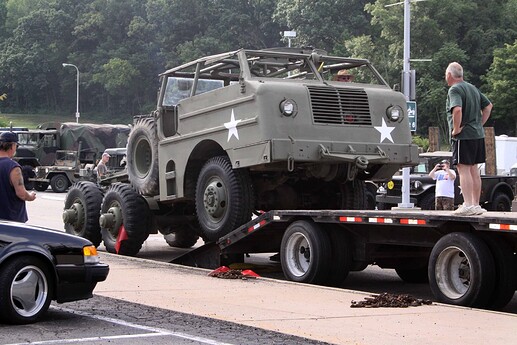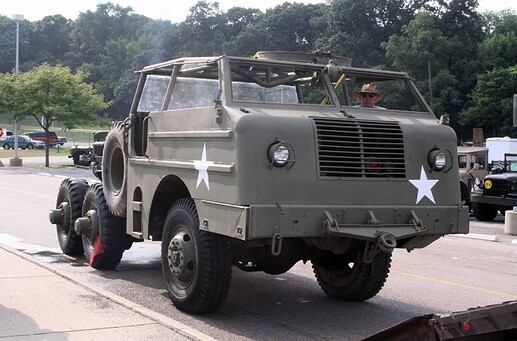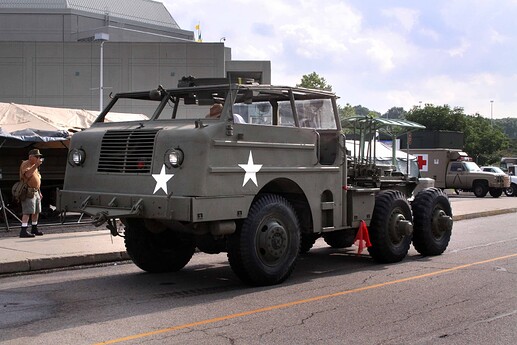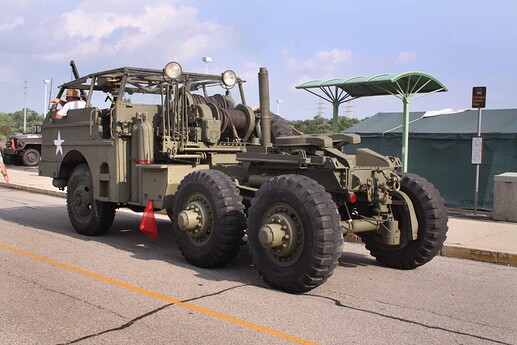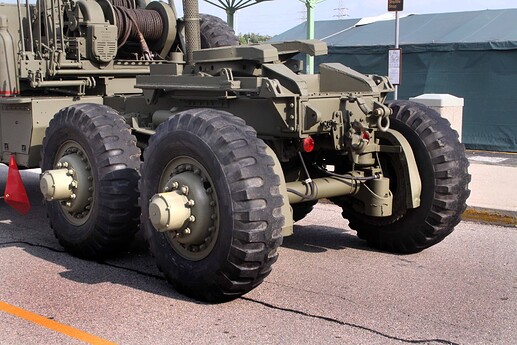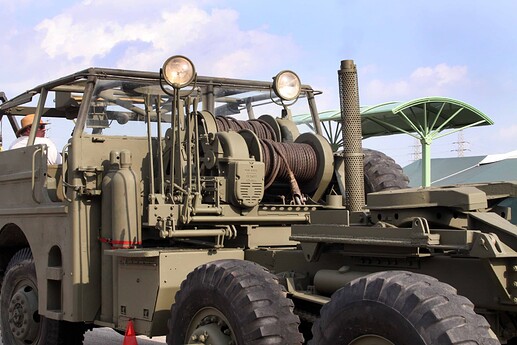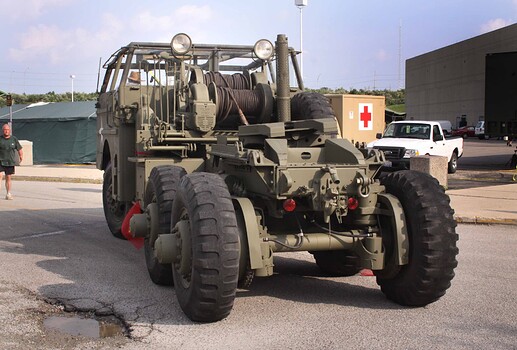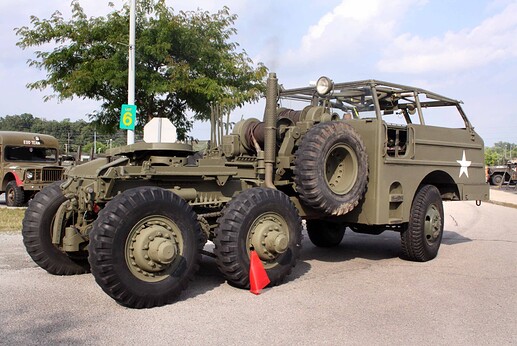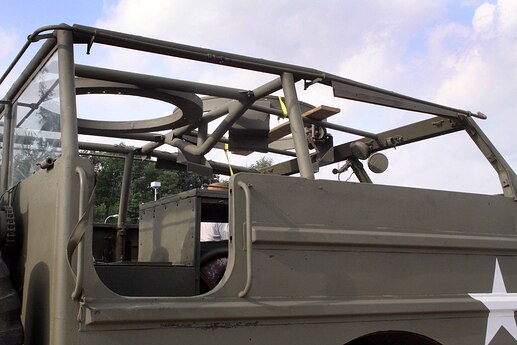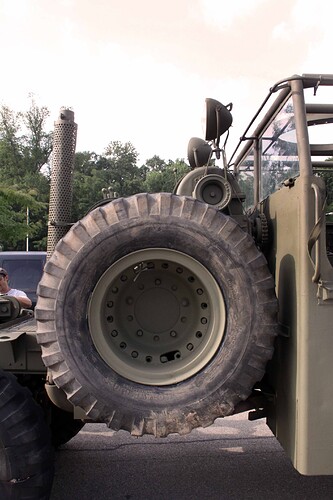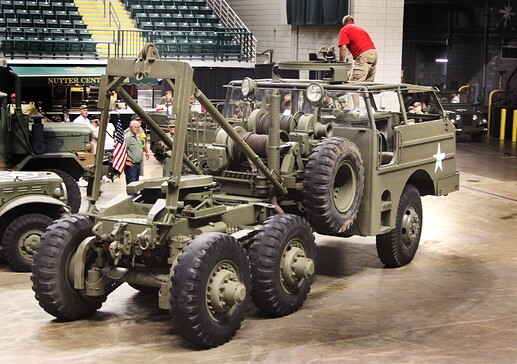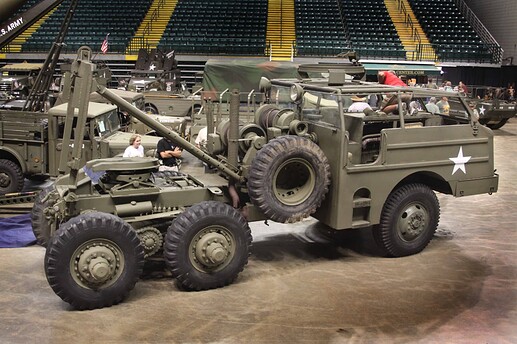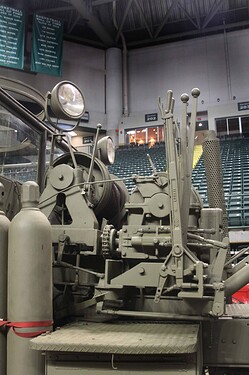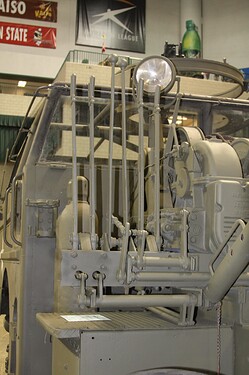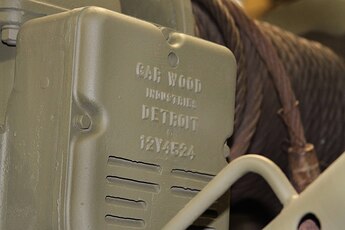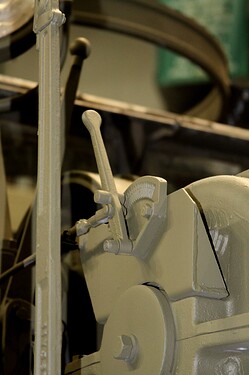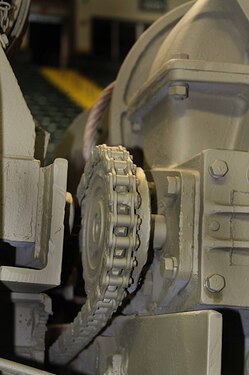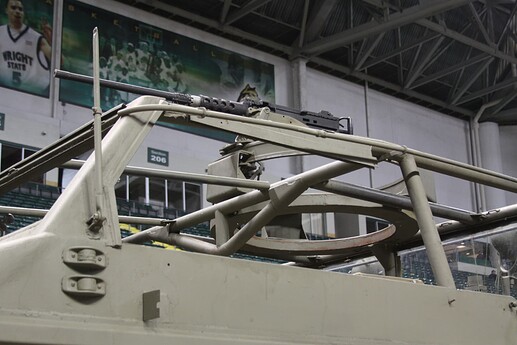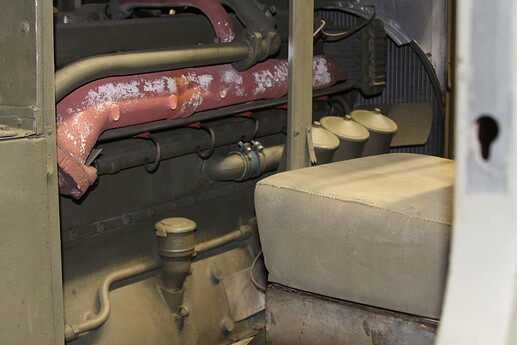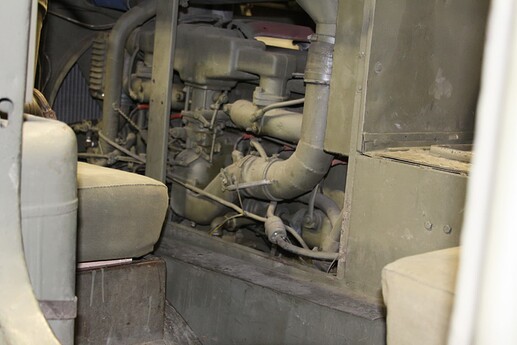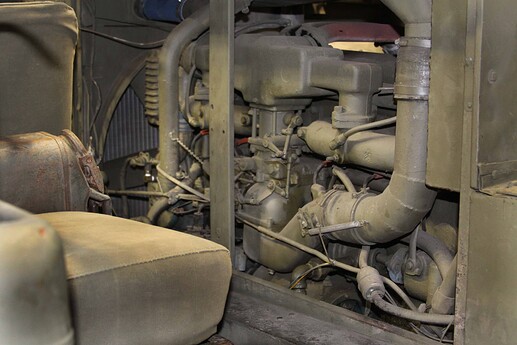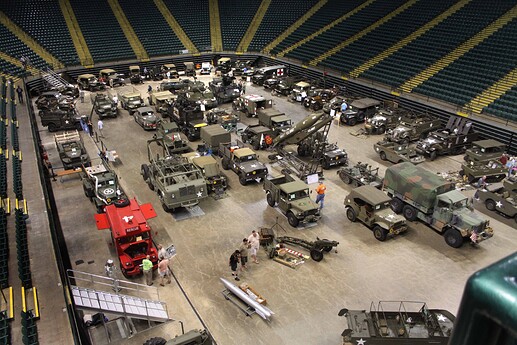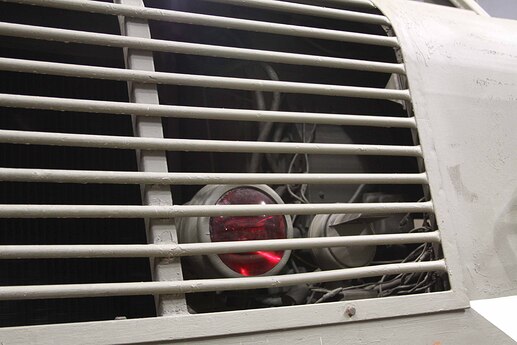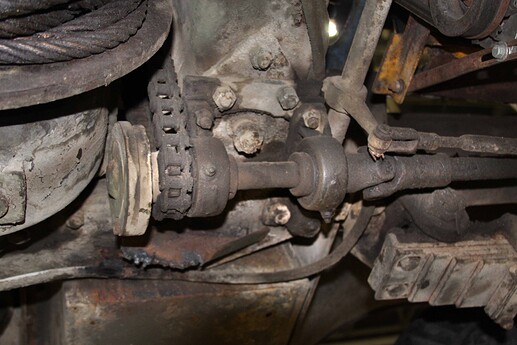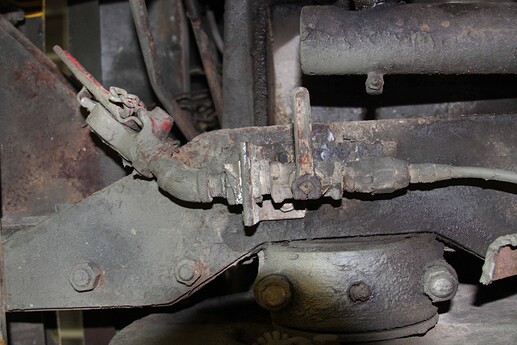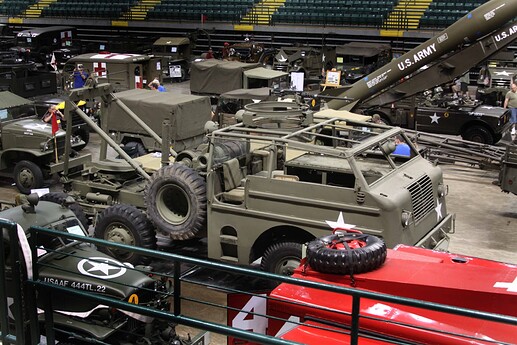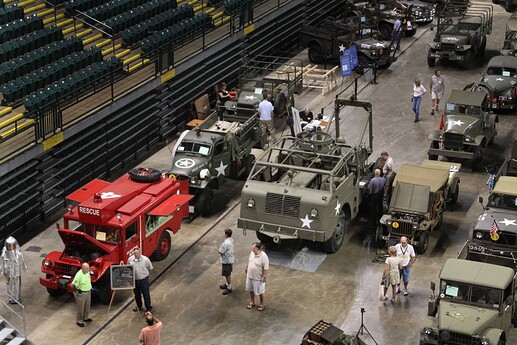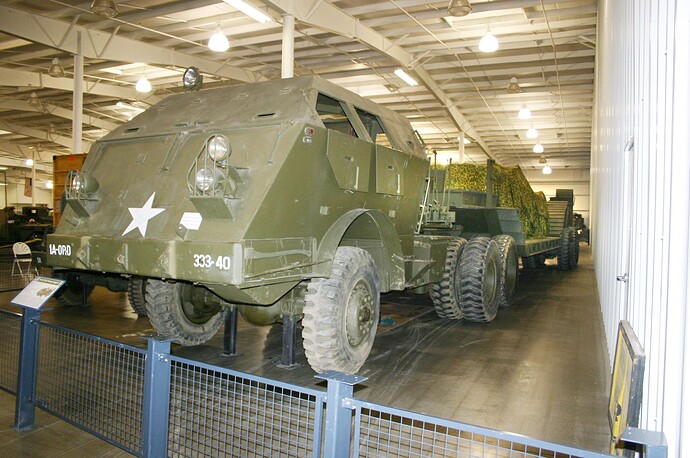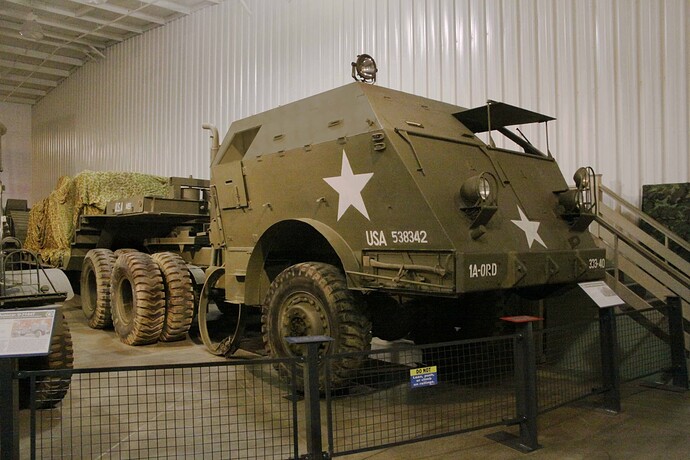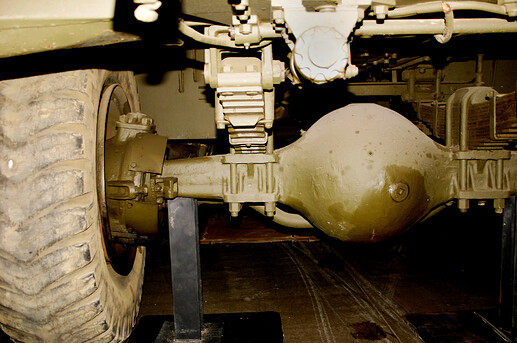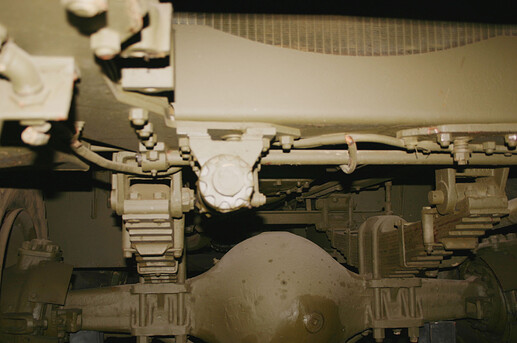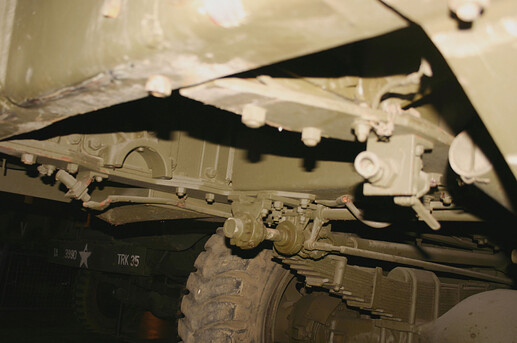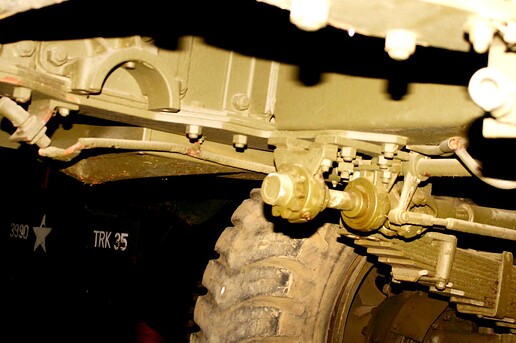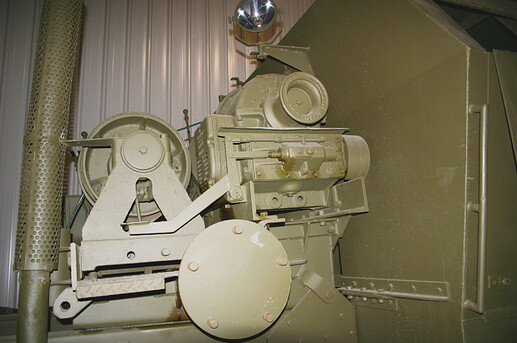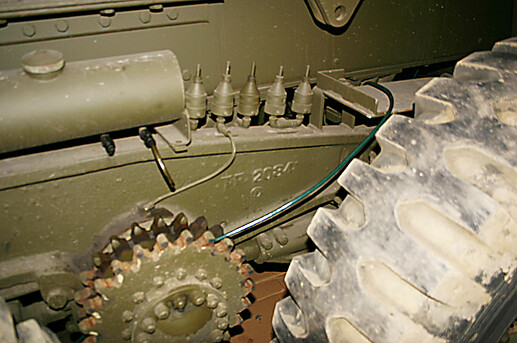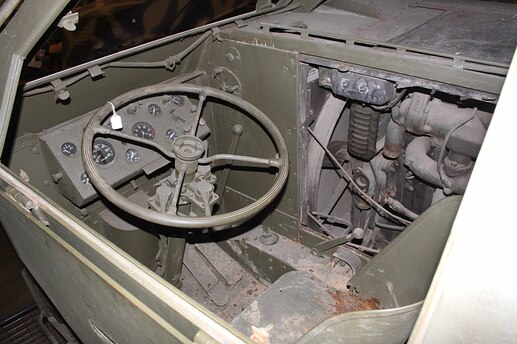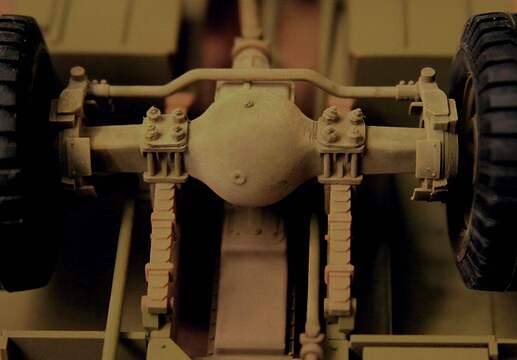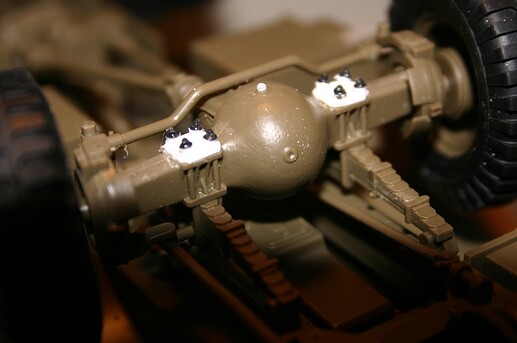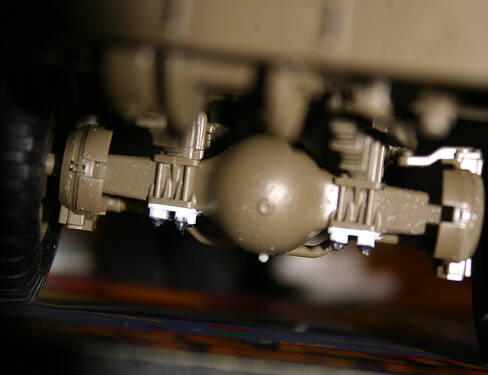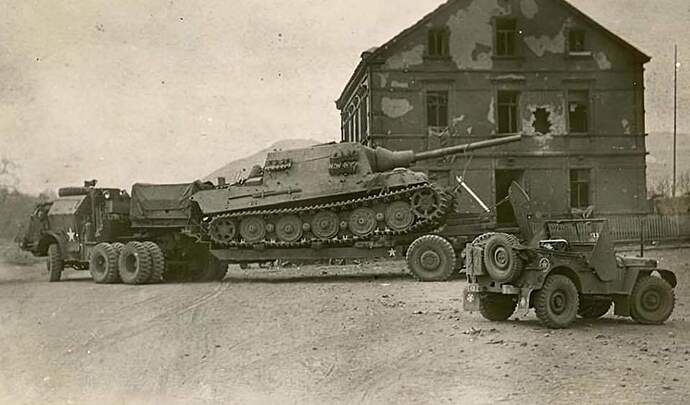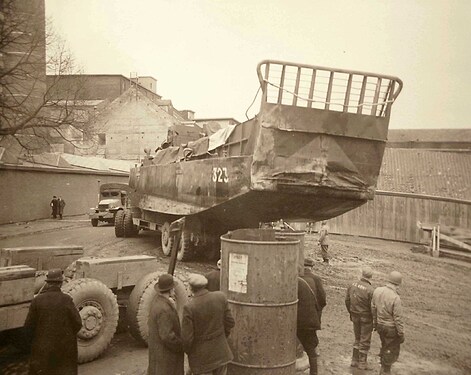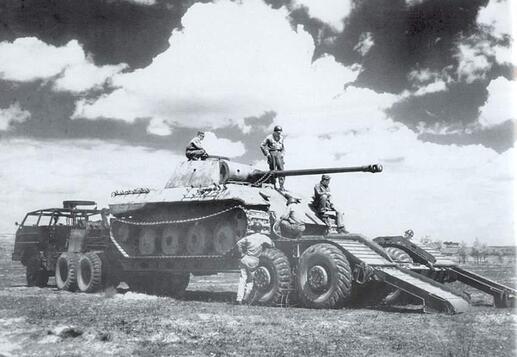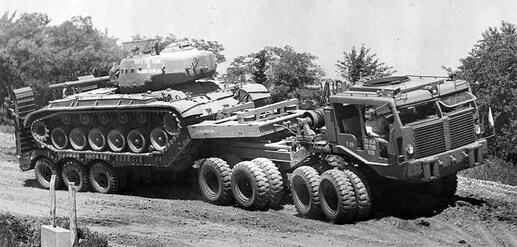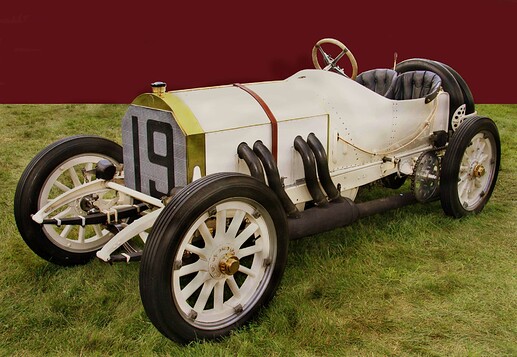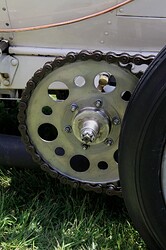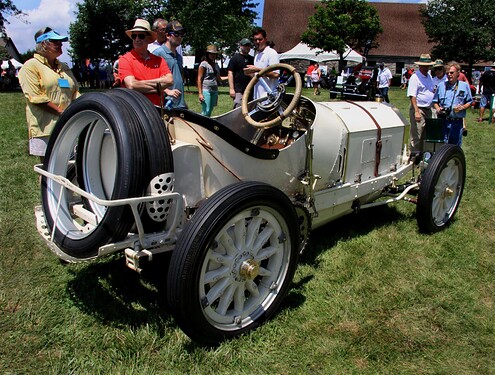Taken at the 2011 MVPA Convention in Dayton, Ohio:
All photos by the author
I really like that whiffletree being carried on the front bumper.
(The term is left over from the horse and buggy days.)
Nowhere else to stow it on the soft cab.
Engine throttle control at the winch control station.
Final chain drive to the forward winch mounted behind the front bumper.
5 Likes
Great shots of the old Dragon Wagon. I wish Tamiya had done the soft cab version too.
1 Like
Tamiya just seems to refuse to do “variants”???
Given all the model tooling the first DW required, offering this soft cab should have been a natural no brainer and would probably have caused people to want to buy both! (I would have!)
A few more reference photos. This time from the Victory Museum in Auburn, Indiana. (Now Closed)
Front axle shackle and leaf spring.
Forward winch mount with winch and final chain drive removed.
Forward winch mount with winch and final chain drive removed.
Oil tank and oil cups for oiling rear chain axle drive.
Front axle shackle bolt details missing from Tamiya Dragon Wagon kit.
(Just a personal peeve of mine. Easily fixed!)
2 Likes
What was the advantage of using chain drive? Why did they use it on the M26?
Single solidly mounted rear differential. No springs for the rear of the vehicle. Simple walking beam suspension on the rear: ~ Simpler to build and maintain than the traditional dual differential, multiple U-joint, four leaf spring style rear end.
While a much more simplistic rear drive to build it seems to go against the common heavy truck construction practices of the day.
The later post-war Sterling 8x8 (Replacement for the Dragon Wagon but never placed into production) used the same chain drive set-up for both front and rear dual axles.
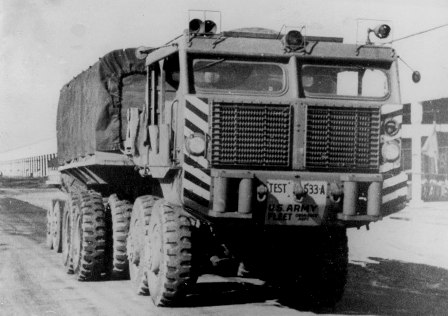
Sterling photos from the Tony Gibbs Collection.
Interesting footnote:
Remember heavy four wheel trucks from the WWI era routinely used a solid mounted rear differential and then employed chain drives to the rear axles. This allowed suspension movement of the rear axle, up and down, while not having the weight of the differential be part of the “sprung weight.”
This concept (but without the chain drive) is used today on modern race cars with independent rear suspension and on many large capacity bulldozers.
Photos by the author
From Keeneland Concours d’Elegance: Keeneland Racecourse, Lexington, Kentucky
2 Likes
